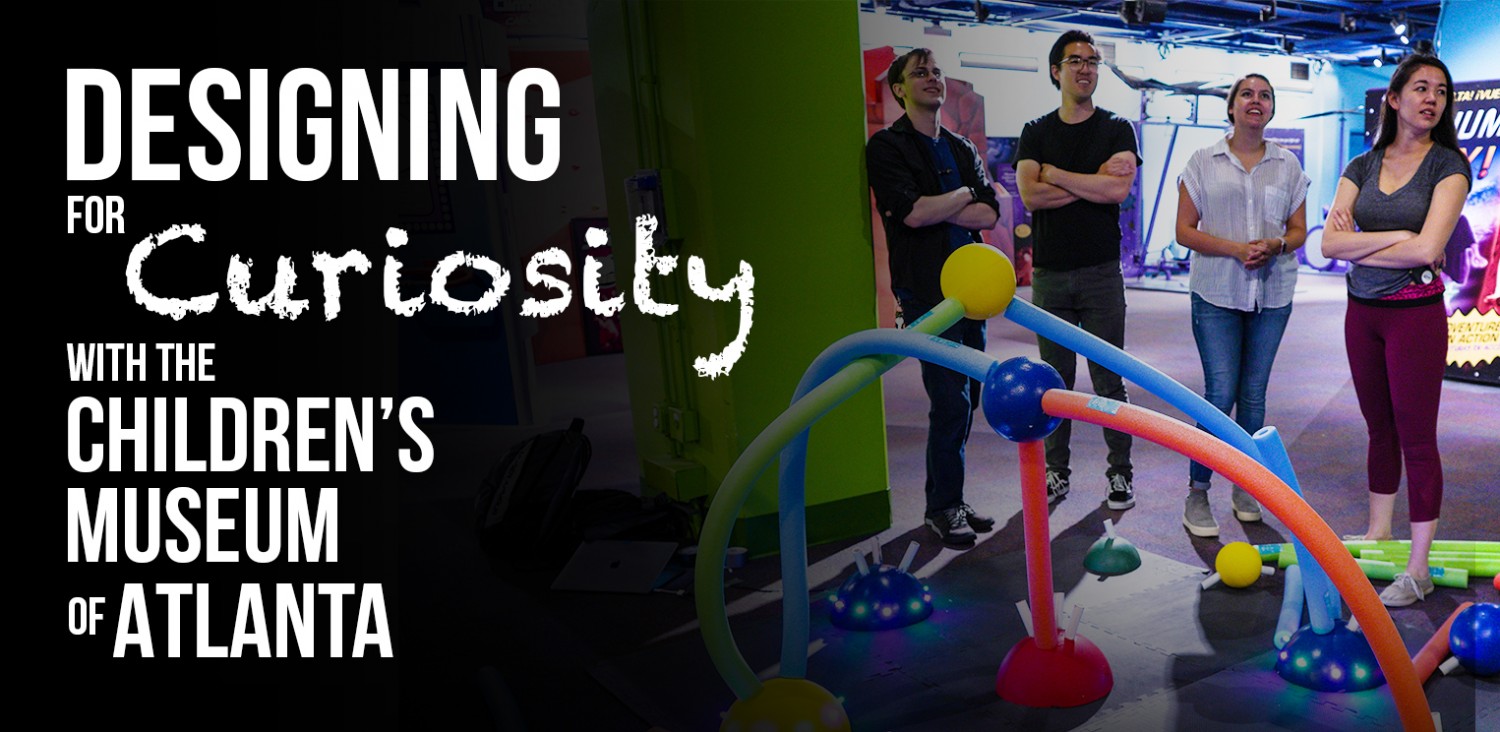
By Alejandra Nash
Curiosity and creativity know no age limits. The desire to discover is at the heart of a recent collaboration between Georgia Tech and a local museum.
Offered by Tech’s School of Industrial Design, a new course, Designing for Curiosity, embraces design methods and user experience discovery. And it is grounded in a partnership with the Children’s Museum of Atlanta.
The course was created by Assistant Professor Hyunjoo Oh. She holds a joint appointment in the School of Industrial Design and the School of Interactive Computing. The goal of Designing for Curiosity is to introduce fundamental design methods to students, and in particular, Oh said, “to design and develop playful and interactive learning experiences for children. I hope that students can apply further practices of design across various interaction design applications through this course.”
Teaming up with the Children’s Museum sparked Tech students’ whimsical side, inspiring six exhibits that ranged from nutrition to light and photography. They varied in content and appearance, but each incorporated interactivity, play, and innovative design.
On exhibit day, museum visitors gravitated to the six new installations, and children were excited to interact with exhibits they had never played with before.
 Molecule Forest. By: Kelsie
Belan, Chris Chen, and Mika Munch. An interactive, immersive environment where kids can create
molecule structures larger than life.
Molecule Forest. By: Kelsie
Belan, Chris Chen, and Mika Munch. An interactive, immersive environment where kids can create
molecule structures larger than life.
The collaboration proved successful. For Kelsie Belan, a master’s student in the Human Computer Interaction program, this partnership with the Children’s Museum helped her gain real-world knowledge of working with a client and a unique customer base.
“Being able to complete research and design based around children's expectations and personas was a very interesting task, and I learned a lot about how to design with learning objectives and tangible goals in mind,” she said.
Belan and her team developed the Molecule Forest exhibit, which allowed children to engage with pool noodles that, when connected to the half-dome structure with sensors, would light up to communicate that a molecule structure had been created.
“The Molecule Forest was a success, and all of our hard work over the semester really paid off,” said Belan. “Both children and parents loved interacting with the life-sized play area, and it was really rewarding to see the ‘aha’ moments from the children when they figured how to create the structures.”
 Mag-Neato! By: Cooper Colglazier
and Ethan Graves. Showcases the amazing power of magnets.
Mag-Neato! By: Cooper Colglazier
and Ethan Graves. Showcases the amazing power of magnets.
For many of Oh’s students, this was the first project that involved designing in a physical space. It allowed them to learn about physical mediums in design, as well as materials exploration. “We had to consider what materials were safe for children to interact with, and how to make them durable against rough play,” said Belan.
With the success of Designing for Curiosity, the museum is excited to continue the partnership. Liz Nevil-Smith, manager of exhibits at the Children’s Museum of Atlanta, enjoyed seeing the industrial design students reinforce her belief that learning through play is relevant and possible at any age.
“We were so impressed with the industrial design students’ ideas,” she said. “They understood that in order to make a fun and educational exhibit, you have to ask a lot of the same questions that kids often ask: ‘How and why does this work?’ ‘ If I change what I'm doing, how will it affect the outcome?’ They also introduced us to new methods, materials, and technology that we hadn't thought of using before.”
 Bee a Pollinator! By: Himani
Deshpande and Duri Long. Focuses on learning about pollination in a fun, physically interactive
way.
Bee a Pollinator! By: Himani
Deshpande and Duri Long. Focuses on learning about pollination in a fun, physically interactive
way.
By conquering the design-to-user challenge, Tech students understood that creating an engaging exhibit was more than just a great concept. They needed to be able to translate the concept into something that children could understand and would want to engage with.
“Some of the concepts that students were interested in introducing were at a higher level than the ages that we serve,” said Nevil-Smith. “But they understood that at this age, every idea and concept is a building block. If the exhibit is engaging and playful for children, they will remember what they learned when they do reach those more complex subjects.”
The project presented a steep learning curve for many of the students in the course, but ultimately it was an enriching experience. “My takeaway is knowing that proper research and design can have positive impacts on the people who use a product,” said Belan. “It has helped reinforce the passion I have for the field that I'm in.”
Learn more about the School of Industrial Design at id.gatech.edu
CREDITS
WRITER: Alejandra Nash
DESIGN: Evan Atkinson
PHOTOGRAPHY: Alejandra Nash
VIDEOGRAPHY: Alejandra Nash
VIDEO EDITING: Evan Atkinson
